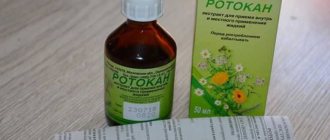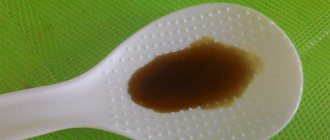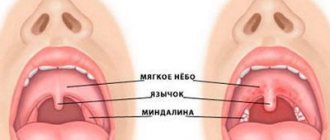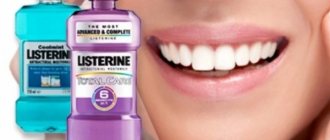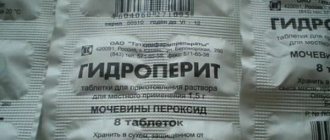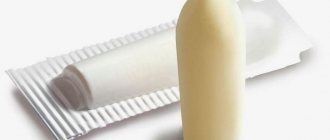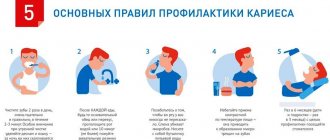Chlorhexidine (“Chlorhexidine bigluconate”) is one of the most popular gargles for a wide range of infectious and viral diseases. Its fame is due to its availability and decades-proven effectiveness. However, it is not clear to everyone how to dilute Chlorhexidine for rinsing. In the article we will present in detail the instructions for preparing the solution for adults and children, indications for use, analogues of the product, recommendations for more effective use.
Characteristics of the product
"Chlorhexidine" by its nature is a universal antiseptic. It was first synthesized at the beginning of the last century in Great Britain. From then to the present, it has been the leading disinfectant for the external treatment of skin, as well as medical instruments. Widely used in surgical practice. In addition to being an independent drug, it is part of many medications - antiseptic, promoting skin regeneration, etc.
"Chlorhexidine bigluconate" is produced by dozens of Russian enterprises alone. In fact, there is no difference in their products. The product differs only in its concentration. In this format it can be presented in five variations:
- 0,05 %.
- 0,2 %.
- 0,5 %.
- 1 %.
- 5 %.
What do these numbers mean? For example, 100 ml of a “Chlorhexidine” solution of five percent concentration (5%) contains 5 ml of the active substance.
The composition of Chlorhexidine preparations is identical. These are just two elements:
- Purified drinking water.
- Ingredient: chlorhexidine bigluconate.
Release form: solution in vials (plastic, glass) of various volumes. The most common containers in pharmacies are 100-500 ml containers. Bottles with a volume of 2 liters or more are produced especially for medical institutions.
How is Chlorgesidine used? What is it used for? The scope of its application is wide. If you purchase the drug specifically for rinsing, then it is better to stop at a solution of 0.05% concentration.
What can be replaced - alternative options
"Chlogexidine" belongs to the class of inexpensive drugs, but it may not always be on hand or in the assortment of the pharmacy. Among analogues with identical active ingredients in their composition, experts identify the following medicines:
- “Instillagel” - along with chlorhexidine digluconate, the composition includes lidocaine, hydrochloride and auxiliary components. It has a pronounced bactericidal effect and gives an analgesic effect; it is often used as a local anesthetic during endoscopic examinations,
- "Baktosin" - the composition also contains a solution of cetrimide. The drug is available in liquid form and is prescribed as part of the treatment of purulent skin infections, as well as pathologies of the oral cavity and bacterial urological diseases,
- “Citeal” also contains chlorocresol and hexamidine diisothionate. Used for antiseptic treatment of skin and mucous membranes for bacterial and fungal infections.
There are other solutions, but they will already contain another active component. One of the most popular drugs belonging to this category is the drug Miramistin.
Release forms
“Chlorhexidine” for sore throat is not only a base for preparing a solution for rinsing. The same component can be found in other effective products. These drugs can be prescribed not only for acute viral and respiratory diseases:
- Dental gels. These are “Metrogil”, “Metrodent”, “Denta” and so on.
- Sprays and tablets indicated for diseases of the nasopharynx and throat - “Drill”, “Anti-angin”, “Sebidin”, etc.
- Cream preparations used for wound healing - Pantoderm, Depanthenol.
- Corticosteroid anti-inflammatory gels. For example, "Bemilon".
- Sprays and gels with a mild analgesic effect - “Lidocaine”, “Instillagel”, etc.
Content:
- Causes of pathology
- Symptoms
- How to rinse with flux - the simplest and safest recipe
- Pharmacy products for flux processing
- Folk recipes
- Why you can’t treat gumboil yourself
- How do doctors treat flux?
Periostitis of the jaw or gumboil is a dangerous dental disease.
It is caused by an infectious-inflammatory process localized in the tissues of the periosteum. The disease should be treated under the supervision of a dentist. The doctor will carry out the necessary antiseptic measures and tell you what to rinse your mouth with gumboil, and select antibiotics.
Self-medication for periostitis is most often ineffective. Moreover, as long as the patient experiments with different folk recipes, the inflammatory process will continue to spread. This will lead to premature loss of the unit - partial edentia.
Remember: rinsing with flux is not a panacea, but only an auxiliary technique. There is no need to focus on it. Treatment of the disease must be comprehensive.
How does the product work?
"Chlorhexidine" for sore throat and other diseases characterized by inflammation of the oropharynx is one of the most effective drugs. It's all about its bactericidal and fungicidal effect.
The benefits of using the drug have been confirmed in laboratory conditions. For the experiment, we took a regular 0.05% solution of the drug. The tests were carried out at room temperature (+22 °C).
The result was as follows:
- Death of bacteria - after 1 minute of exposure.
- The death of fungal organisms occurs after 10 minutes of exposure.
Moreover, it is noted that as the ambient temperature increases, the effectiveness of the solution begins to increase. For example, already at 40-50 degrees (the temperature of the liquid at which comfortable rinsing of the oropharynx is possible), the exposure time is almost halved!
This means that it is enough to hold the solution in your mouth for about 30 seconds to eliminate all harmful microorganisms living there. How to achieve a fungicidal effect (against fungal creatures)? After the procedure, it is important to abstain from drinking and snacking for a while.
During pregnancy and breastfeeding
"Chlorhexidine" is indicated for use by women during pregnancy and breastfeeding, but only if the patient does not have open wounds or cuts in her mouth. The drug has a superficial effect and is not absorbed into the blood or breast milk.
When breastfeeding, the drug can also be used
For small patients, the preferred form is a spray - it does not require rinsing skills to use. With its help, you can easily treat any areas of the oral mucosa. However, Chlorhexidine should not be used on children under 3 years of age, in particular for irrigating the tonsils. In both cases, the maximum permissible course duration should not exceed 10 days, and the use of the drug must be agreed with a doctor.
Before rinsing
The reader will soon learn how to dilute Chlorhexidine for rinsing. It is equally important to properly prepare for the procedure - this will increase the effect of using the product.
The preliminary steps are simple:
- Before using Chlorhexidine, rinse your mouth and throat with plain water. But it’s better to avoid salty and soda solutions! In this case, the pH of the environment increases. Under such conditions, chlorhexidine bigluconate precipitates. And this makes rinsing more noticeable and even painful for you.
- The instructions for the solutions say that instead of rinsing, you can brush your teeth. Experts consider such preparation to be more effective, since “Chlorhexidine” is more intense in a slightly alkaline (pH 7-8) or neutral (pH 5-7) environment. Do not use hard tap water for preliminary hygiene procedures. It will reduce the beneficial bactericidal properties of Chlorhexidine.
How to rinse with flux - the simplest and safest recipe
The most accessible composition is ordinary drinking water, in which soda and salt are dissolved. It is indicated for many dental ailments. Anyone can cook it. The listed components are usually found in any kitchen.
You need to add a teaspoon of salt and soda to a glass of warm (not hot!) water. Stir. If the patient tolerates iodine well, then you can include a few drops of it in the medicine. Then the liquid will acquire even more pronounced antiseptic properties.
Rinsing should be done on the sore side of the jaw. They should be repeated after every meal and hygiene procedures. If the pain is very severe, and it is not possible to get dental care right now, you can do a mouth bath with a soda-salt solution. To do this, you need to put it in your mouth and hold it on the side of the sore gum for several minutes.
Application of 0.05% solution
The instructions for using Chlorhexidine for rinsing are quite simple:
- Pour the required volume of solution from the bottle into a special glass or other convenient container.
- Sip a small amount and keep it in your mouth.
- Tilt your head back and begin the procedure, not allowing the liquid to go down the esophagus.
- Tilt your head, throw it back deeper, return to the starting position. This is done so that the drug covers all the walls of the oropharynx.
- To achieve the effect, it is enough to rinse with one such portion of the solution for thirty seconds.
- Spit out the product - do not swallow it.
The recommended number of rinses (half a minute each) is about three times a day.
Action and effectiveness of the solution after tooth extraction
After removing a tooth from its socket, an open wound remains in the mouth, which quickly fills with blood. Next, a blood clot forms in it, which becomes a kind of protective barrier that prevents the penetration of bacteria and the spread of infection through injured tissue. When this clot does not fit too tightly to the socket, is damaged, falls out, or does not appear at all, the risk of developing serious complications - alveolitis, which can subsequently lead to osteomyelitis of the jaw and osteonecrosis, that is, gradual necrosis of bone structures, increases significantly.
The photo shows a blood clot after tooth extraction
The main reason for the development of this complication is insufficient oral hygiene during the rehabilitation period. Harmful microorganisms penetrate the alveoli and provoke inflammatory processes. To prevent this, after tooth extraction, the doctor prescribes oral baths using Chlorhexidine. The drug provides high-quality disinfection of all surfaces in the oral cavity, prevents the development and spread of pathological processes of an inflammatory nature.
How to properly dilute Chlorhexidine?
So, only the 0.05% concentration of the drug does not require dilution. It can be used for rinsing immediately, which is why we recommend purchasing this type of product.
And if you bought a drug with a higher percentage of chlorhexidine bigluconate, then it must be further diluted with water before use. This is not done “by eye”, but in compliance with certain proportions.
How to dilute Chlorhexidine for rinsing:
- 0.2% concentration. Dilution with water in a ratio of one to four (one part Chlorhexidine to four parts water).
- 0.5% concentration. Dilution with water in a ratio of one to ten.
- 1% concentration. Dilution with water in a ratio of one to twenty.
- 5% concentration. How to dilute Chlorhexidine 5%? Dilution with water in a ratio of one to one hundred.
How to dilute Chlorhexidine for a child? Maintain the same water-preparation ratios as given above.
It is important not only not to exceed the percentage of chlorhexidine bigluconate in water (this can lead to burns of the mucous membranes of the oropharynx), but also not to prepare a solution that is too weak. It will be less effective and will not have the proper effect on microbes.
Is it necessary to treat the throat with Chlorhexidine?
Chlorhexidine is a powerful antiseptic that kills germs, viruses, and fungi. It has a minimum number of contraindications and is used by all persons, pregnant women and children. It is imperative to follow simple rules for taking an antiseptic:
- Do not swallow the solution. Otherwise, you will need to do gastric lavage and drink absorbents.
- Many people are interested in how long you can rinse your mouth with Chlorhexidine ? Do not rinse the solution for a long time or exceed the concentration and dosage of the antiseptic.
- You cannot use the product for more than 15 days.
- If the drug gets into your eyes, rinse them with warm water. To reduce irritation of the conjunctiva, apply special drops to your eyes.
- The product must be kept away from UV radiation.
- The effect of the drug is reduced if used together with products that contain iodine.
- If the drug contains a high concentration, you can dilute it yourself to a concentration of 0.05%. For the antiseptic to be most effective, warm it up.
We answered the question whether it is possible to rinse your mouth with Chlorhexidine during inflammation .
Features of the procedure for children
Chlorhexidine is an indispensable remedy for rinsing children. Note that for children, as well as for adults, the minimum concentration of the solution will remain 0.05%. There is no point in reducing it, otherwise to get the effect you will have to increase the exposure time of the product.
The instructions for the drug tell us that young age in itself is not a contraindication for use. However, parents should be aware that the solution tastes bitter and during the procedure can cause a burning sensation in the mouth and throat.
Most guys tolerate this procedure calmly. Another part of children is sensitive to the described unpleasant effects.
The frequency of rinsing is the same as for adults - two to three times a day. The oropharynx should also be treated with a solution of 0.05% concentration for half a minute. The parent needs to ensure that the child does not accidentally swallow the product during the procedure. To prevent this from happening, you can replace gargling for young children with treating the throat with Chlorhexidine in the form of a spray.
Possible complications
In case of long-term use of mouth rinse, it is possible to observe negative consequences, which can be in the form of headache, drowsiness, sleep disturbance and anxiety, unquenchable thirst and a feeling of dry mouth.
Darkening of the enamel may appear on the teeth, which does not go away after brushing. In the intervals between doses, an unpleasant taste may appear in the mouth, which characterizes the taste of the solution itself.
You can avoid the appearance of unpleasant symptoms by following the recommendations for use, and the course should not last more than one to a maximum of two weeks.
If all recommendations are followed, chlorhexidine actively copes with diseases. However, you need to remember that this is not a universal remedy for all diseases, so its use is recommended in combination with other medications.
Rinse instructions for children
Parents now know how to dilute Chlorhexidine to rinse their child. Then it is important to follow a certain sequence of actions for greater effectiveness of the procedure:
- Do I need to dilute Chlorhexidine for rinsing? If this is a ready-made 0.05% solution, then no. If the drug is of higher concentration, then it is diluted with water in the proportions indicated above.
- Pour out 15 ml of solution. For convenience, you can use a measuring cup. A tablespoon can replace it if you know its volume.
- The child should gargle with the product by tilting his head back slightly and looking upward. While exhaling, he pronounces any vowel sound. Be sure to show your child how this is done. If the baby is too small, then it is better to refuse rinsing - he can easily choke.
- The procedure, as for adults, lasts 30 seconds.
- The solution must be spit out completely.
After the procedure, it is not recommended to drink or eat for two hours. It is best to rinse in the morning after breakfast and before going to bed in the evening.
Symptoms
Periostitis affects the gums.
Visually, it resembles an inflamed abscess. May cause increased body temperature, swelling of the cheeks, lips, and neck. Always accompanied by pain. Pus is released from the flux. If the drainage channel has not yet formed, the patient can observe yellow-green contents under the mucous membranes of the gums.
The inflammatory process is strong, causing the immune system to mobilize. This results in increased fatigue and weakness.
It’s good if the periostitis breaks out. Then the cavity will cleanse itself naturally. But there is a possibility that pus gets into the facial tissues, reaches the bones, and penetrates the systemic bloodstream. Then there will be a threat to human life.
Are rinses allowed for pregnant women?
Pregnancy is not a contraindication for using Chlorhexidine solution when gargling. This substance is not absorbed by the mother's mucous membranes.
Accidental ingestion of the solution by a woman is not dangerous for the fetus. Systemic absorption in this case will be so small that it will not have a negative effect on the child.
Mechanism of action of chlorhexidine
Chlorhexidine is an antiseptic that destroys the bacterial membrane. Active against gram-positive and gram-negative bacteria, some viruses, yeast and dermatophyte fungi. The solution is stable in a purulent environment or in blood. After rinsing, the chlorhexidine digluconate solution coats the mucous membranes of the oral cavity with a thin layer. The effect lasts for several hours.
Features of use for various diseases
Most often, gargling with a solution of Chlorhexidine is indicated for sore throat. The medicine here fights a large number of pathogens. Moreover, the manual for the product notes that bacterial resistance (addiction) does not develop to it.
When treating tonsillitis, it is also recommended to gargle with the drug at least three times a day. However, treatment should not be continued for more than a week - Chlorhexidine changes the color of tooth enamel, which we will discuss later. If it is necessary to continue the course of rinsing, it is best to replace it with a similar drug.
Use of Chlorhexidine in dentistry
Upon contact with the mucous membrane, it forms a thin protective film. The effect lasts after the procedure for 24 hours.
Shown:
- with gingivitis;
- in case of development of periodontitis;
- against the background of treatment of stomatitis;
- in case of inflammation of the socket after tooth extraction;
- for inflammation caused by semi-impacted wisdom teeth;
- for disinfection of removable dentures;
- for root canal treatment;
- after installation of dental implants.
An alcohol-based chlorhexidine is used to treat the hands of a dental surgeon.
The antiseptic enhances the effect of surface anesthesia, therefore it is often prescribed together with Lidocaine. This reduces the number of bacteria at the injection site. Able to fight pathogenic microorganisms after removing stone and plaque.
Mouth rinse
Chlorhexidine solution is effective not only for curing diseases affecting the oropharynx. It is also used for therapy and prevention of infectious diseases of the gums and oral cavity. This is a good antiseptic and wound healing agent after surgical operations in this location. The procedure will significantly improve a person’s condition with infectious lesions of the oral mucosa - gingivitis, stomatitis, etc.
Moreover, rinsing the mouth with Chlorhexidine is also very useful for throat diseases. After all, a huge number of bacteria enter the pharynx from the oral cavity.
How to dilute Chlorhexidine for mouth rinse? In the same proportions as for the throat. The optimal concentration would be 0.05%. However, if the procedure does not bring the desired effect, then when rinsing the mouth, you can increase the concentration of the solution to 0.2%.
How to dilute Chlorhexidine to rinse gums? The instructions for the procedure will be similar to those described above.
Indications for use
In the field of periodontics, for 40 years, the drug has been used in the treatment of inflammatory processes. Even today, experts insist on its significant effectiveness, so they actively prescribe it to their patients. The special effect of chlorhexidine is manifested in the treatment of the following diseases of the oral cavity:
- during the course of infectious processes;
- for throat diseases;
- in the treatment of symptoms of stomatitis and ulcers;
- after suffering severe injuries;
- for inflammation of the gums;
- in the postoperative period associated with tooth extraction;
- as an auxiliary substance during cleaning of braces and dentures.
The drug seems to envelop the oral cavity with a film, capturing the inflamed area, and lasts for some time. When chlorhexidine substances make their way inside the affected area, they stop their consumption of oxygen and block the further development of the bacterial environment, which causes their destruction. A similar situation exists with the elimination of purulent processes.
Side effects
Now you are familiar with the instructions for using “Chlorhexidine” for rinsing. You also need to know about some unpleasant effects of the drug:
- Darkening of tooth enamel. Note that the effect is temporary, but can deprive the smile of its aesthetic appeal for some time.
- The appearance of deposits on tooth enamel. Such a negative effect can only be achieved with frequent systemic use of rinses.
The use of the drug does not have a serious negative impact on human health and life. Cases of side effects are so unlikely that they are not even described in the instructions for Chlorhexidine. This is what made it the most common antiseptic.
Advantages and disadvantages of the drug
Positive properties of the drug:
- kills pathogenic microorganisms (antimicrobial activity is higher than that of Miramistin);
- maintains a long-lasting antiseptic effect even upon contact with bloody and purulent secretions;
- used in low concentrations, which protects the oral mucosa from irritation;
- impossibility of overdose;
- affordable price.
Negative points include:
- weak or zero effect in the treatment of viral diseases, especially like herpes;
- bitter, unpleasant taste causes discomfort;
- Regular use leads to darkening of the enamel and surface of the tongue.
Analogues of the drug
Chlorhexidine digluconate is an active ingredient not only of the drug of the same name. It is also part of similar medications (in terms of concentration, effectiveness, dosage, etc.), but produced under a different name. Complete analogues of “Chlorhexidine” in composition are “Amident” (0.15% con (0.005% concentration).
Also in pharmacies you can find analogues of “Chlorgesidine” for antiseptic properties. The composition and active substances of these drugs will be different. Let's briefly introduce them:
- Hydrogen peroxide. There have been no comparative clinical studies of Chlorhexidine and peroxide. However, practical experience shows that chlorhexidine bigluconate still copes better with ARVI pathogens when rinsing. However, hydrogen peroxide is more effective for purulent inflammation. It can also be used for hygienic rinsing in case of sore throat. An important detail is that it does not darken tooth enamel, unlike Chlorhexidine.
- "Furacilin". A well-known, inexpensive and effective antiseptic. Widely used both at home and in medical institutions. Available in several forms - alcohol and aqueous solutions, tablets. The active ingredient of this drug is nitrofural. It has both fungicidal properties (fights fungal microorganisms) and bactericidal properties (fights bacterial microorganisms). It is also good as a rinse solution.
- "Miramistin". Unlike all the drugs mentioned above, this one is not a traditional, but an innovative antiseptic. Many of the best means for gargling and mouthwash. This is confirmed by the antimicrobial characteristics of the drug. It is also impossible not to note its following advantages: it is odorless and tasteless, does not cause irritation of the mucous membrane or any unpleasant effects. But there is a significant disadvantage: the cost of Miramistin is approximately higher than the price of Chlorhexidine and other described agents.
Let's summarize. “Chlorhexidine” is a highly effective budget antiseptic that fights a wide range of pathogens that cause diseases of the gums, throat, and oral cavity. Only one concentration is suitable for use - 0.05%. All others need to be diluted with water before this one. Among the negative aspects are burning, bitter taste, temporary darkening of tooth enamel (with long-term use). In hypersensitive people, rinsing with Chlorhexidine may cause nausea and vomiting.
What contraindications are there for taking it?
Like any medicinal drug, Chlorhexidine has some restrictions on its use. If you decide to rinse your mouth with Chlorhexidine for gum inflammation, the instructions should be at hand. The drug should not be taken under the following conditions:
- personal intolerance to the substances of the drug,
- the child's age is less than 7 years,
- simultaneous use of other irrigation agents, for example, hydrogen peroxide.
If the patient follows all the recommendations and knows how to rinse the mouth with Chlorhexidine , then he does not experience side effects. Regular irrigation can cause unpleasant conditions:
- tooth enamel or dentures have changed color,
- premature formation of dental calculus,
- deformation of taste qualities,
- creating a yellow coating on the tongue,
- allergies in the form of itchy skin on the tongue and urticaria.
If the patient swallows an antiseptic, you need to thoroughly rinse the stomach and drink charcoal. You should talk to your doctor before your appointment. He will tell you which Chlorhexidine to gargle with and how to do it.
can chlorhexidine be used
How to know when it’s time to change your dentures
It is recommended to change dentures every 3-5 years or 5-7 years (depending on the material and type of construction).
When using removable dentures, the load from chewing food on bone tissue is only insignificant, which is fraught with its gradual resorption. The jawbone decreases in size, and not always evenly. This process takes from six months to several years and leads to a discrepancy between the shape of the prosthesis and the relief of the gums - the prosthesis is less secure and becomes less stable. This means relocation (if possible) or complete replacement of the structure is required.
In addition, materials wear out over time under the influence of saliva, nicotine, food irritants, and mechanical stress. Cracks appear on the structure, the surface becomes less smooth, which contributes to the accumulation of a large amount of plaque. If you have chosen crowns made of plastic (namely, they are in most cases used in removable orthopedic devices), it is worth considering that they wear down quite quickly, so after about 2-3 years the bite changes, which can affect the condition of the joint and the process of normal chewing food.
Why you can’t treat gumboil yourself
Periostitis is a purulent disease. If treated incorrectly, it often causes dangerous complications. Therefore, dentists do not recommend that patients self-medicate. You can understand that the pathology has begun to progress rapidly by the following symptoms:
- severe weakness, increased physical fatigue;
- heat;
- severe swelling;
- headache;
- inability to chew food due to pain;
- facial distortion due to tumor.
With such symptoms, rinsing alone will not help. You need to urgently go to the doctor.
How do doctors treat flux?
As we wrote above, rinsing is an auxiliary technique. They must be combined with therapeutic applications and physiotherapy. Of the latter, the following are effective:
- UHF;
- laser therapy;
- electrophoresis;
- magnetic therapy.
The purulent acute form of the disease always requires surgical manipulation. The doctor opens the subperiosteal or submucosal abscess and installs a drainage tube into the gum. All procedures are performed under local anesthesia, so the patient does not feel pain.
Afterwards, the patient is prescribed antibiotics and rinses, and is told what precautions must be taken to avoid complications of periostitis. As a rule, recovery occurs within one week. If the crown and roots are severely damaged or inflammation is advanced, tooth extraction may be required.
What to do if the solution is swallowed
Sometimes even a person who is very good at gargling has a failure in this process, and the drug ends up being swallowed. First of all, of course, you should not panic. Chlorhexidine that enters the stomach immediately will not be absorbed, and it is quite possible to get rid of it. To do this, you need to immediately give the victim warm boiled water to drink (2 glasses for a child and 4 glasses for an adult) and induce vomiting. Next, you need to take activated carbon at the rate of 1 tablet per 10 kg of weight. After this, the patient should be put to bed and covered with a warm blanket. This rest should last at least 2 hours.
Do I need to remove dentures at night?
Modern “removers” can be worn constantly and it is not necessary to remove them at night – especially during the first 2-3 weeks, while adaptation to the designs occurs. However, outside the oral cavity, dentures with a plastic base should NOT be placed in a humid environment, since favorable conditions are created for the development and growth of pathogenic microflora. This can lead to bleeding and gum inflammation.
If there are metal elements, the prosthesis must also not be stored in tap water, especially chlorinated water - this can lead to metal corrosion.
For storage and transportation, it is necessary to use specially designed protective ventilated boxes/cases in which the prosthesis will be kept clean and dry.
Give up removable dentures forever! Consultation + diagnosis + treatment plan FREE. Find out which dental implantation method is right for you in 1 day!
Enroll now
